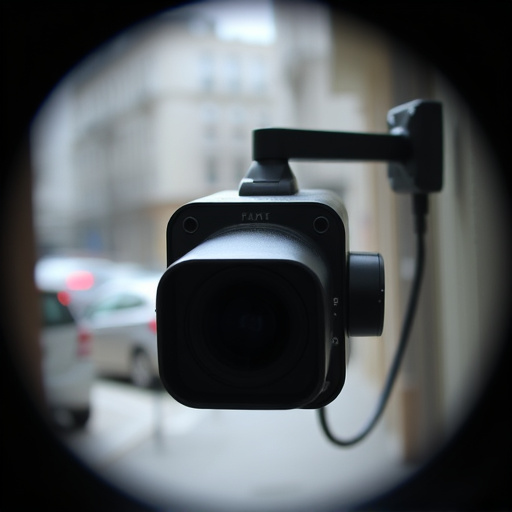Miniature surveillance devices disguised as everyday objects like light bulbs or fake rocks offer discreet home security with high-def cameras, motion sensors, wireless connectivity, and 2-way audio, accessible via a smartphone app. Known as the most realistic looking security decoys, these sophisticated replicas mimic items like electrical outlets or houseplants, blending seamlessly into their surroundings to enhance security without compromising aesthetics. However, this technology raises ethical concerns regarding privacy infringement, challenging the balance between security and individual rights, necessitating regulatory adaptation and public discourse on ethical boundaries in home security technology.
“Uncover the intricate world of miniature surveillance devices, where technology shrinks down to fit seamlessly into everyday home objects. From understanding the underlying tech to exploring creative disguises as security decoys, this article delves into the details. We examine how these tiny cameras, often indistinguishable from regular items, raise ethical questions while offering enhanced security. Discover the art of crafting highly realistic-looking security decoys that blend effortlessly into your living space.”
- Understanding Miniature Surveillance Devices: Unveiling the Technology
- Most Realistic Looking Security Decoys: Design and Materials
- Integration into Everyday Home Objects: Creativity in Disguise
- Ethical Considerations and Future Implications of Hidden Cameras
Understanding Miniature Surveillance Devices: Unveiling the Technology
Miniature surveillance devices have evolved significantly, driven by advancements in technology and a growing demand for discreet security solutions. These tiny cameras, often disguised as everyday objects, offer an innovative approach to home security. Crafted with meticulous attention to detail, they are designed to look like common household items such as light bulbs, power outlets, or even fake rocks, making them the most realistic looking security decoys on the market.
The technology behind these miniature devices is remarkable. They typically feature high-definition cameras, motion sensors, and wireless connectivity, allowing users to monitor their homes remotely via a smartphone app. Some models also include two-way audio functionality, enabling voice communication through the device. With such sophisticated capabilities packed into a compact form factor, these surveillance cameras provide an unparalleled level of discretion and convenience for homeowners seeking enhanced security without compromising aesthetics.
Most Realistic Looking Security Decoys: Design and Materials
The evolution of miniature surveillance devices has led to an intriguing development: security decoys that mimic everyday home objects. These sophisticated replicas, known as the most realistic looking security decoys, are meticulously designed to fool both the naked eye and advanced detection systems. Crafted with a blend of high-quality materials, including real-looking plastics, metals, and even fabrics, they closely resemble legitimate household items like electrical outlets, fire alarms, or even houseplants.
The key to their effectiveness lies in the attention to detail. Manufacturers invest considerable effort into replicating not just the physical appearance but also the subtle nuances of authentic objects. From the texture of wood grain to the flicker of an LED light, these decoys are engineered to blend seamlessly into their surroundings, making them excellent tools for both professional security setups and personal privacy measures.
Integration into Everyday Home Objects: Creativity in Disguise
In the realm of home security, innovation has led to a unique and creative approach—hiding surveillance devices within everyday objects. The most realistic-looking security decoys are transforming ordinary items into powerful tools for monitoring and protection. From a subtle camera disguised as a lightbulb to motion sensors disguised as decorative figurines, these miniature devices offer an unassuming way to keep an eye on your home.
The beauty of this integration lies in its disguise; it allows homeowners to enhance their security without compromising the aesthetics of their living spaces. Creative designers and manufacturers have mastered the art of blending functionality with form, making it nearly impossible for intruders to detect these high-tech gadgets. With such sophisticated security decoys, protecting your home has become more stealthy and, in a way, more elegant.
Ethical Considerations and Future Implications of Hidden Cameras
The integration of miniature surveillance devices into everyday home objects raises significant ethical concerns. While these hidden cameras, often disguised as common items, offer enhanced security and peace of mind for homeowners, they also infringe on privacy. The ability to record activities within personal spaces without explicit consent is a major dilemma, challenging the balance between security and individual rights. As technology advances, creating ever-more sophisticated decoys that are nearly indistinguishable from regular objects (most realistic looking security decoys), the potential for misuse grows.
Looking ahead, the future implications of widespread hidden camera usage in homes suggest complex social and legal landscapes. Regulators and policymakers will need to adapt privacy laws to address these new challenges, ensuring transparency and accountability in surveillance practices. Additionally, public discourse on ethical boundaries in home security technology becomes increasingly vital to safeguard individual freedoms and foster a society that values both safety and privacy.
Miniature surveillance devices, when integrated into everyday home objects, present a fascinating blend of technology and creativity. While the most realistic-looking security decoys offer advanced design and materials that mimic genuine items seamlessly, it’s crucial to balance innovation with ethical considerations. As these hidden cameras become more prevalent, society must grapple with implications that touch on privacy, consent, and potential misuse. By understanding both the capabilities and limitations of this technology, we can ensure its responsible deployment, making our homes safer while preserving personal freedoms.
